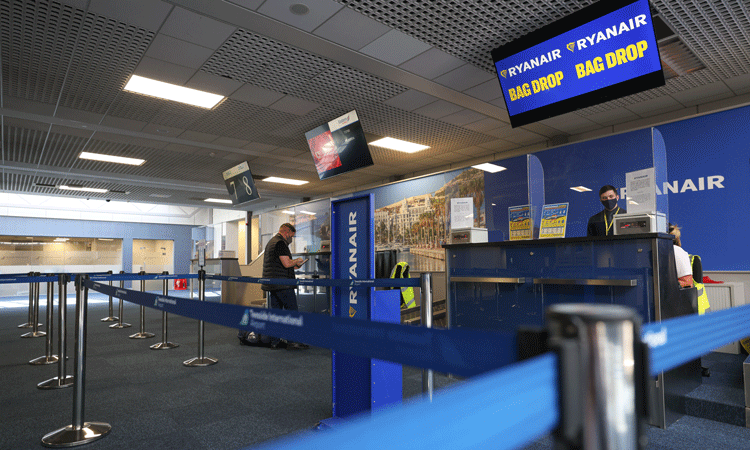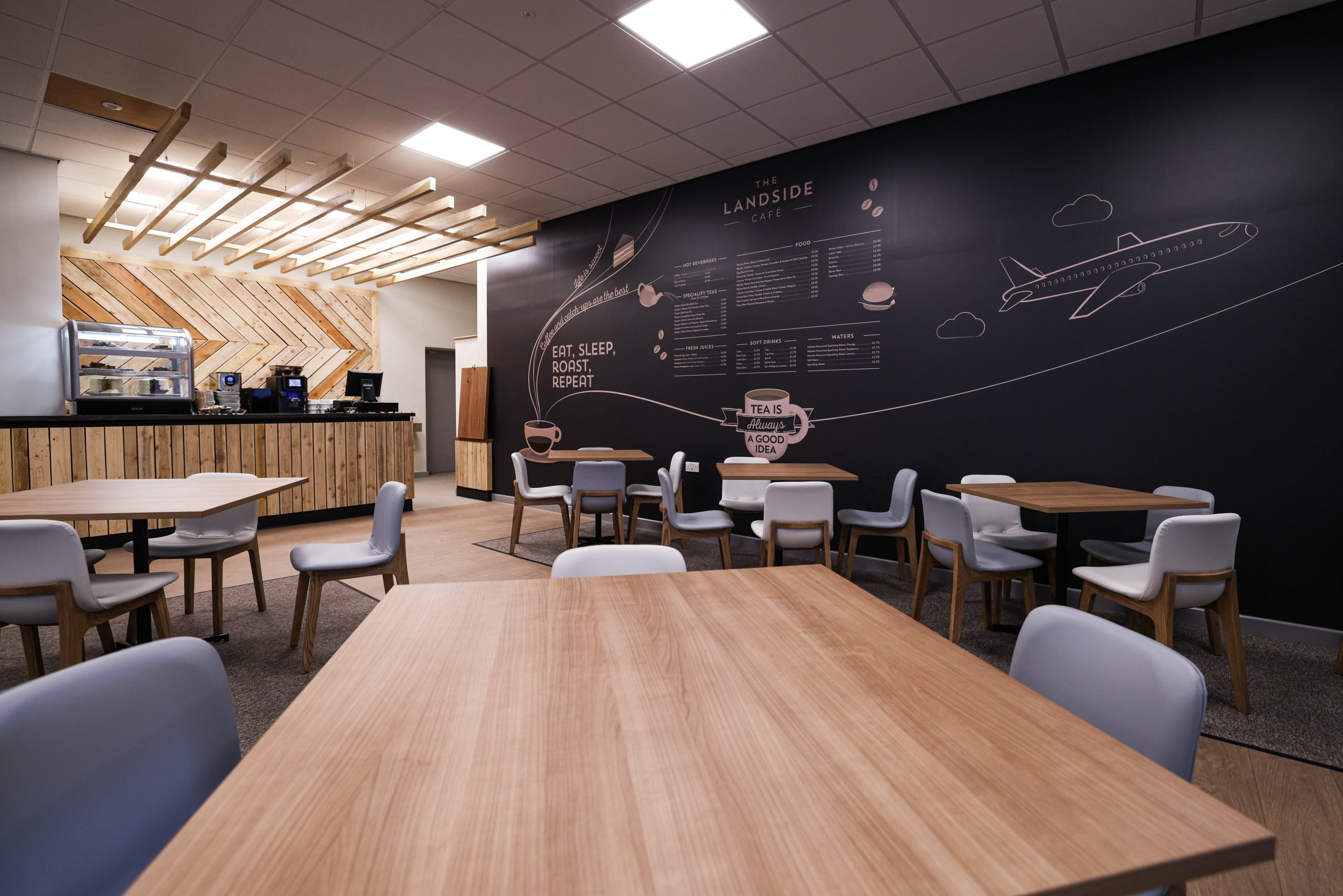Putting Teesside Airport back on the map
- Like
- Digg
- Del
- Tumblr
- VKontakte
- Buffer
- Love This
- Odnoklassniki
- Meneame
- Blogger
- Amazon
- Yahoo Mail
- Gmail
- AOL
- Newsvine
- HackerNews
- Evernote
- MySpace
- Mail.ru
- Viadeo
- Line
- Comments
- Yummly
- SMS
- Viber
- Telegram
- Subscribe
- Skype
- Facebook Messenger
- Kakao
- LiveJournal
- Yammer
- Edgar
- Fintel
- Mix
- Instapaper
- Copy Link
Posted: 25 April 2022 | Phil Forster | No comments yet
Phil Forster, Managing Director of Teesside International Airport, tells International Airport Review, about the complete redevelopment of the airport’s terminal building, creating a more seamless, stress-free, and enjoyable experience for passengers, and what they have in store for 2022.


Credit: Check-in hall at Teesside International Airport (MME)
Teesside International Airport (MME) was brought back into public ownership in 2019, and since I became Managing Director in 2020, I have had one aim – to make it an airport our region can be proud of.
Chronic underinvestment over many years has meant that many basic facilities other airports take for granted – duty-free, for example – fell by the wayside as passenger numbers, routes, and services dwindled.
I and the elected Mayor of the Tees Valley, Ben Houchen, were determined to reverse that decline and not lose this vital regional asset and we’ve been doing just that – all in the face of a global pandemic.
The onset of the pandemic
The continuing impact COVID-19 on the aviation industry is well documented and, for our operations, led to two periods during lockdowns when the airport was almost entirely closed to the public.
This year, we’re pushing ahead with a new Bannatyne Spa. This will make us one of only a handful of UK airports with a spa, further improving the customer experience with a range of short treatments while they wait”
Despite this, in late 2020 we managed to secure the low-cost carrier Ryanair; cement TUI’s return to the airport this summer, and introduced a raft of regular domestic flights with Loganair. This increased flight schedule meant that we urgently needed to redevelop our terminal building which, when we acquired it, had only a handful of flights to Aberdeen and Amsterdam Schiphol with any regularity.
Our second shutdown, in early 2021, was turned from a potential setback into an opportunity, giving us the chance to kick-start this major overhaul to make travelling from Teesside easier, smoother, and more hassle-free than ever. We also had to ensure it would be future-proof, and easily capable of meeting our ambitions of welcoming 1.4 million passengers through our doors at the end of our 10-year turnaround plan, with a second-to-none customer experience.
Airports as hubs of the community
One of our main principles in operating this airport is that it should not just serve the interests of our passengers, but those of everyone in our communities, from individuals to the companies that operate here. That’s why, after a series of business engagement sessions, we employed 18 local firms – including architects, joiners, electricians, and flooring firms – to deliver our plans and make sure the money we were spending would be kept within, and benefit, our area.
Make no mistake, this was not just a new lick of paint – this was an entire redevelopment of our terminal building, redefining what it meant to fly from Teesside. First and foremost, we installed a new state-of-the-art body scanner and a C3 X-ray baggage scanner in our security area. This meant we could remove the requirement for people to take out liquid and electronics from their bags and pass them through separately, ensuring as little queueing as possible to pass to departures. As we’ve learned from the pandemic, it is also important to minimise contact and touch points, and this technology means there’s one less step in our security process, helping to protect public health too.
Transforming the passenger experience
We then remodelled and redecorated our arrivals hall and reopened previously mothballed areas of the terminal’s check-in area, installing new check‑in desks and hold baggage scanners. We also established a Landside Café, replacing a small tea and coffee station with a modern meeting spot for airport users and the public alike. Our departures lounge saw the greatest transformation, after inheriting a site with virtually zero leisure offering, save for one café bar. This was overhauled and rechristened the Transporter Bar & Kitchen, after one of our region’s most iconic landmarks, the Transporter Bridge in Middlesbrough. This speaks to the deep sense of pride in our region, which extends to the airport, demonstrated in the fact that a 2019 poll saw 14,000 people vote to rename the airport from Durham Tees Valley to its previous, much-loved name Teesside International Airport. We gave our passengers the chance to have their say once again, with a competition to name the new bar we have created. The final name, The Goosepool, is a reference to the airport’s former incarnation as an RAF base, locally referred to as Goosepool – the adjacent farm. A new executive lounge, The Rockliffe Lounge, was also launched in partnership with Rockliffe Hall, the region’s only five-star hotel and spa.
Involving local businesses
Our involvement with local businesses didn’t end with the refurbishment work. We have partnered with local fashion boutique House of Zana and beauty outlet Rejoy, who have established a new shop in the terminal to showcase products from some of our best local producers. We’ve also signed agreements with Tees Valley firms on everything from serving local gin in our bars, to selling novelty socks inspired by the area in our newsagents.


Credit: Dave Charnley Photography.
The icing on the cake, indeed the final piece of the puzzle, has been the reintroduction of World Duty Free after an eight-year absence, thanks to a 12-year deal struck with Dufry, who threw open its doors just before Christmas – a fantastic present and fitting end to a year of transformation.
Pampering passengers
This year, we’re pushing ahead with a new Bannatyne Spa, after Dragons’ Den star Duncan Bannatyne announced a £100,000 investment into the airport. This will make us one of only a handful of UK airports with a spa, further improving the customer experience with a range of short treatments while they wait. This will naturally create more jobs for our local area, as well. Operating during the pandemic saw us innovating and continuously adapting in the face of the virus. We introduced a new contactless mobile ordering platform for our bar, allowing passengers to place orders without leaving their tables, and helped trial a ground-breaking COVID-19 detector created by local firm Kromek. Our philosophy of the airport as an enabler for the region has paid off in spades, with this strategy helping us take on 53 new members of staff in 2021, plus an extra 12 in the duty-free store, and with more in the pipeline.


Credit: Rockliffe Lounge at Teesside International Airport (MME)
This is only the tip of the iceberg as we enter a second phase of transformation focused on our land and property assets. We’re creating a landside Sky Bar and at-height viewing platform of the runway to recapture the heyday of the airport when it was a destination in its own right. A new 14,640ft2 office space is in development, alongside increasing our cargo and freight handling capabilities. Work is also underway on a 270‑acre business park with unique airside access, for further high-quality office, warehousing, and logistics facilities. This southside development and parts of land on the north of the airport also make up part of the Teesside Freeport, the UK’s first and largest of its kind. As a customs zone, imports can enter customs areas without paying tariffs, with businesses able to manufacture goods using the imports, adding value, and export without ever paying these full tariffs, on top of other benefits. This will prove a key attractor for businesses as we diversify our revenue streams.
Sustainability aims
We’re also dedicated to supporting the Tees Valley’s contribution to net zero by progressing solar energy opportunities on the site to power our facilities and those of our tenants. We are installing electric vehicle charging points for tenants and the public, and trials into airside vehicles and equipment powered by hydrogen are taking place as part of our region’s Hydrogen Transport Hub designation. In the long-term, we’re aiming to achieve net zero by 2035 and working with the chemicals sector, local research organisations and businesses on the development of sustainable aviation fuels. Now we’re looking to the future with a renewed sense of purpose knowing that, like our region, we can punch above our weight. The past year – our airport’s 80th birthday – was a critical one in breathing new life into a much-neglected organisation. As we enter 2022, with more flights, more airlines and more passengers, here’s to 80 more!
Biography


Issue
Related topics
Air traffic control/management (ATC/ATM), Airport construction and design, Airport development, Airside operations, Baggage handling, COVID-19, Digital transformation, Funding and finance, Passenger experience and seamless travel, Passenger volumes, Retail, Terminal operations


















